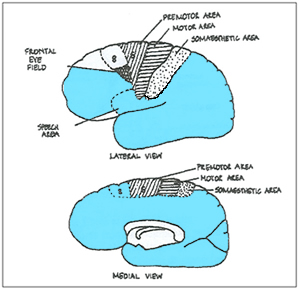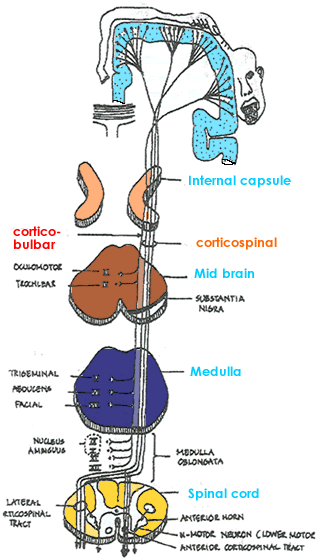Course
 Cerebrum: Corona radiata, Posterior limb of internal capsule Cerebrum: Corona radiata, Posterior limb of internal capsule
 Mid brain : Middle of crus cerebri Mid brain : Middle of crus cerebri
 Pons: Basal pons Pons: Basal pons
 Medulla: Pyramid, 75-85% pyramidal decussation Medulla: Pyramid, 75-85% pyramidal decussation
 Spinal cord: Lateral corticospinal- Lateral funiculus, Ventral corticospinal - ventral funiculus Spinal cord: Lateral corticospinal- Lateral funiculus, Ventral corticospinal - ventral funiculus
Components
- Corticobulbar
- Corticospinal
Termination
Corticospinal |
Corticobulbar |
Anterior horn cells ( ventral horn ) at the following levels:
- 55% Cervical
- 20% Thoracic
- 25% Lumbosacral
|
Nuclei of:
- Oculomotor
- Trochlea
- Trigeminal
- Abducens
- Facial
- Glossopharyngeal
- Vagus
- Hypoglossal
|
Function
- Control of fine voluntary movements
|

